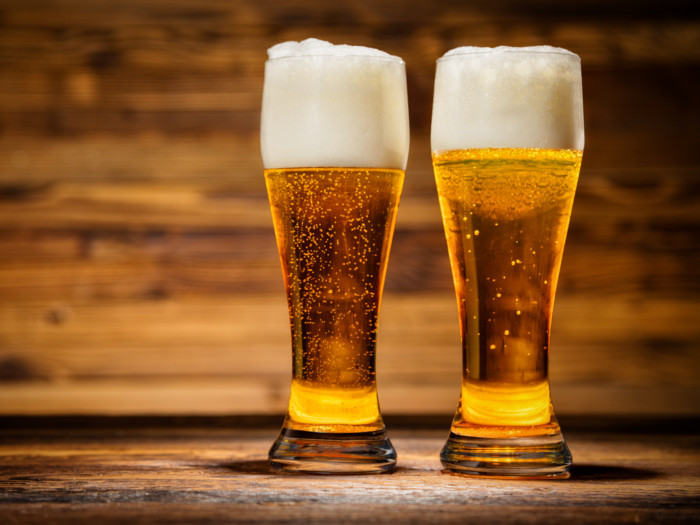Malt liquor isn’t the most common drink to sip on at the end of the day, but in some cultures and demographics, it is a very popular type of alcohol.
What is Malt Liquor?
Malt liquor is a beer fermented from grain, sugar, and yeast, with an ABV of 6%- 12%, making it stronger than most commercial beers. It tastes sweet and lacks the bitterness of some beers. It has a lot of carbonation, with a mild flavor.
The process of brewing this beverage is similar to brewing beer, but there are a number of key differences. Most notably, malt liquor has added sugars, which is what converts into alcohol during fermentation. You can call this grain-based liquor ‘beer’, but the two are generally considered different beverages. [1]
How to Make?
Malt liquor is made by fermenting grain and sugars over a number of weeks until the yeast has converted most of the sugar to alcohol. This beverage does have gluten from barley and should be avoided by people with extreme sensitivities, particularly if they have been diagnosed with celiac disease. [2]
Brewing malt liquor at home has been achieved by many homebrewers. With a proper brewing kit, you can ferment barley, sugar, and yeast over the course of a few weeks and create your very own batch of this tasty beverage. However, be careful, as this brew is significantly stronger than traditional beer!
| Serving Size : | |
|---|---|
| Nutrient | Value |
| Water [g] | 94.5 |
| Energy | 40 |
| Energy [kJ] | 165 |
| Protein [g] | 0.35 |
| Ash [g] | 0.07 |
| Calcium, Ca [mg] | 3 |
| Iron, Fe [mg] | 0.03 |
| Magnesium, Mg [mg] | 5 |
| Phosphorus, P [mg] | 13 |
| Potassium, K [mg] | 33 |
| Sodium, Na [mg] | 3 |
| Zinc, Zn [mg] | 0.08 |
| Copper, Cu [mg] | 0.01 |
| Manganese, Mn [mg] | 0.01 |
| Thiamin [mg] | 0.03 |
| Riboflavin [mg] | 0.04 |
| Niacin [mg] | 0.4 |
| Pantothenic acid [mg] | 0.15 |
| Vitamin B-6 [mg] | 0.04 |
| Folate, total [µg] | 4 |
| Folate, food [µg] | 4 |
| Folate, DFE [µg] | 4 |
| Alcohol, ethyl [g] | 5.5 |
| Sources include : USDA [3] | |
Nutrition Facts
Malt liquor has a higher alcohol content than regular beer usually, which is why the calories also are more. Remember the higher the alcohol content, the more the calorie count. According to the USDA, a bottle of malt liquor (1184 grams or approximately a little over 40 ounces) contains 474 calories. [4]
It is usually sold in 40-oz. bottles, 16-oz. to 24-oz. cans or 12-oz. servings. According to the 2015-2020 Dietary Guidelines for Americans, a standard serving of beer is 12 ounces, with a 5% ABV. So make sure you exercise caution while drinking malt liquor. [5]
Malt Liquor Vs Beer
Here are the main differences between malt liquor and beer.
- Fermenting process: Malt liquor is always bottom-fermented while beer can be either top-fermented or bottom-fermented.
- Alcohol content: Most beers range from 2.5-5% ABV. However, malt liquor is known for its high ABV and is usually upwards of 12% ABV.
- Flavor: Beer has a smooth finish as well as a range of flavor from smokey to light with bitter tones. On the other hand, malt liquor contains little or no hops and tends to be on the sweeter side.
- Price: Malt liquor is cheaper than beer and is usually sold in 40-ounce bottles. Beer is usually available in a 12-oz bottle or can. [6]
Word of Warning
When consuming alcohol, you should always drink in moderation, as exceeding 12 ounces per day will negate most of the benefits of this alcohol. Malt liquor is high in alcohol and sugar, both of which are highly addictive substances, so alcoholism, liver disease, and obesity are the primary side effects of overindulgence. [7] [8]

